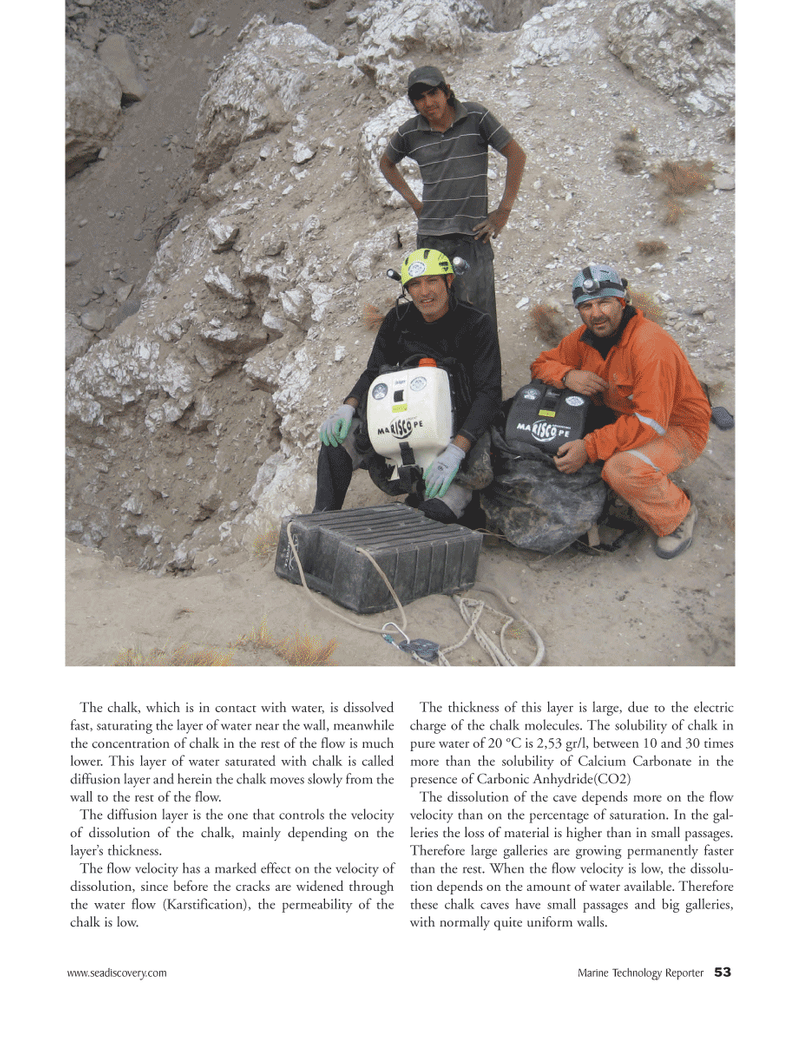
Page 53: of Marine Technology Magazine (May 2012)
Hydrographic Survey
Read this page in Pdf, Flash or Html5 edition of May 2012 Marine Technology Magazine
www.seadiscovery.com Marine Technology Reporter 53The chalk, which is in contact with water, is dissolved fast, saturating the layer of water near the wall, meanwhile the concentration of chalk in the rest of the flow is much lower. This layer of water saturated with chalk is called diffusion layer and herein the chalk moves slowly from the wall to the rest of the flow. The diffusion layer is the one that controls the velocity of dissolution of the chalk, mainly depending on thelayer?s thickness. The flow velocity has a marked effect on the velocity of dissolution, since before the cracks are widened through the water flow (Karstification), the permeability of the chalk is low. The thickness of this layer is large, due to the electric charge of the chalk molecules. The solubility of chalk in pure water of 20 °C is 2,53 gr/l, between 10 and 30 times more than the solubility of Calcium Carbonate in the presence of Carbonic Anhydride(CO2) The dissolution of the cave depends more on the flow velocity than on the percentage of saturation. In the gal- leries the loss of material is higher than in small passages.Therefore large galleries are growing permanently faster than the rest. When the flow velocity is low, the dissolu- tion depends on the amount of water available. Therefore these chalk caves have small passages and big galleries, with normally quite uniform walls. MTR#4 (50-64):MTR Layouts 5/4/2012 3:17 PM Page 53

 52
52

 54
54
